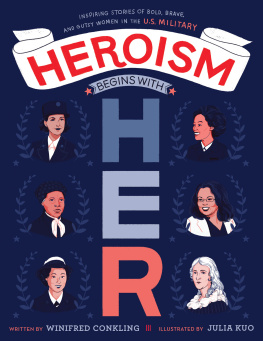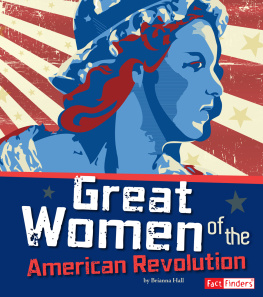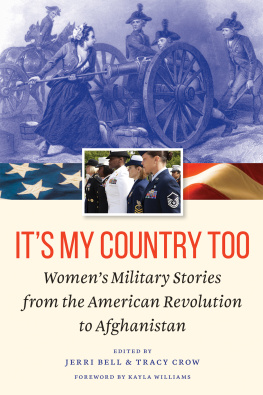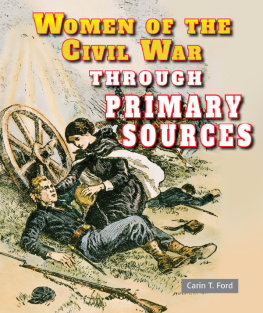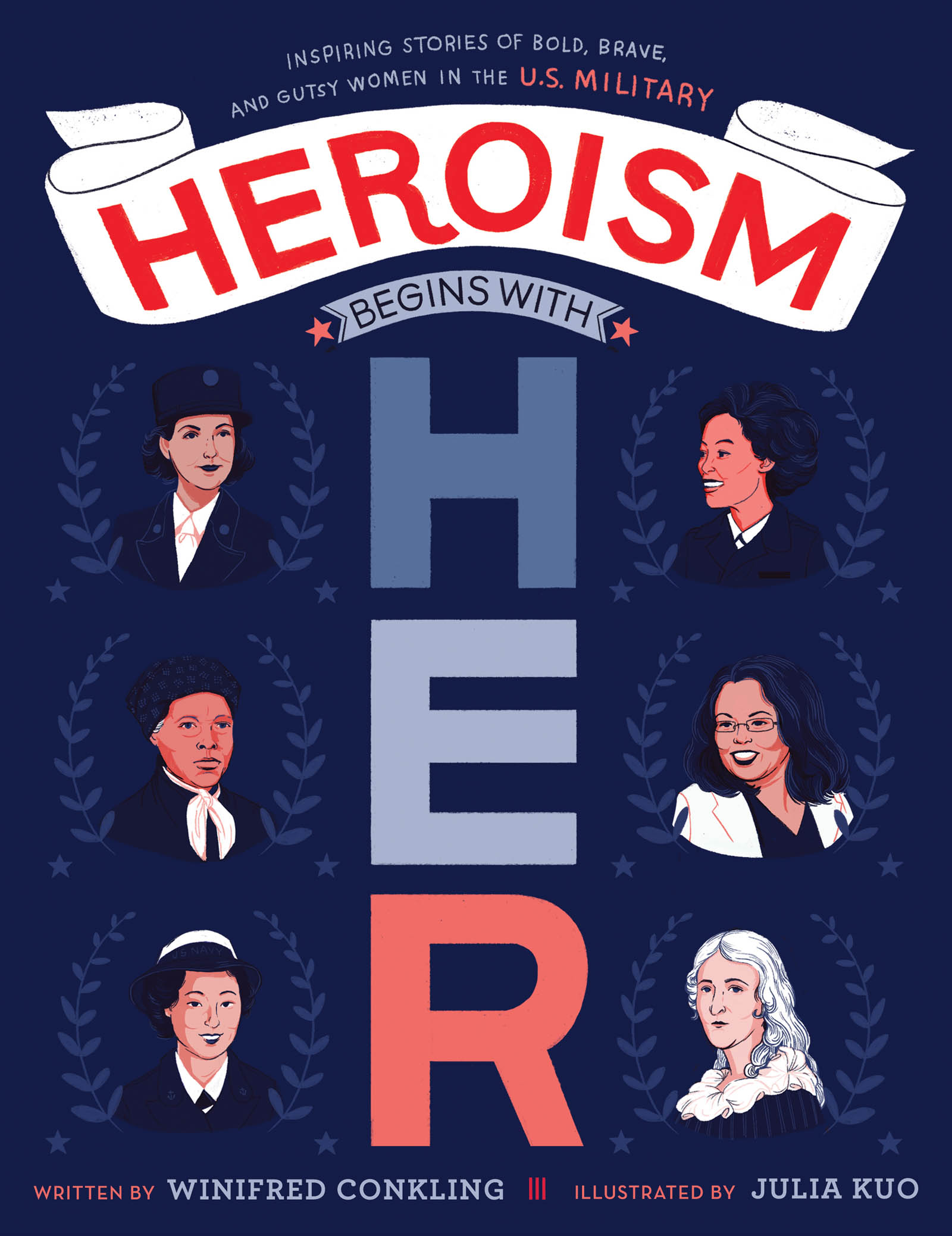Contents
Guide
To the women who serve, with gratitude
Contents

W omen have been involved with the military throughout American history. In every war, from the American Revolution to todays battles in Iraq and Afghanistan, women have proved themselves to be brave, patriotic, honorable, and competent in service to their country.
The positions open to women in the military and the opportunities offered to them have changed dramatically over the years. In the colonial period, it was unthinkable for a woman to enlist in the military. For the first one hundred years of U.S. history, womens lives were much more restricted. They could not own property or sign contracts. If they worked for pay, their wages belonged to their husbands (if they were married) or their fathers (if they were single). Women could not vote. They could not serve on juries or testify in court. And, of course, they could not openly serve in the armed services.
Today, women volunteer for service in all branches of the armed forces: army, navy, air force, marines, and coast guard. And, if qualified, they can serve in any position at any rank or command. For almost 240 years, the military refused to allow women to serve in combat. That last restriction was finally lifted in 2013.
This book tells the inspiring and provocative stories of women who have broken down barriers, defied the odds, and shattered expectations of what female soldiers can be. It includes dozens of examples of female patriotism at its best, from the colonial women who dressed as men so they could serve their country to the modern soldiers who have led military commands and demonstrated their physical and mental toughness both in training and on the battlefield. Women in the military are no longer a novelty; they are an integral and essential part of the American armed forces.


THE REVOLUTIONARY WAR (17751783)
The Revolutionary War was fought between Great Britain and the thirteen colonies, which declared independence and formed the United States of America. Tensions between the colonists and the homeland began to rise with the passage of the Stamp Act in 1765. Colonists resented paying taxes when they were not represented in the British Parliament. Over time, the tensions escalated, finally erupting in the Battles of Lexington and Concord in 1775. The colonists organized the Continental Army on June 14, 1775. After the war, most units of the Continental Army disbanded, and the soldiers and the military women returned to their previous occupations.
WOMEN IN THE REVOLUTIONARY WAR
As far back as the Revolutionary War, women served their country both on the battlefield and behind the scenes. During this time, men in power never considered allowing women to enlist as soldiers in the Continental Army. But some tenacious and deeply patriotic women got around the rules.
A few females decided to see if they could slip through. These women bound their breasts with cloth and dressed in mens clothing. Some were caught immediately, but others got away with the masquerade for months or even years.
While women werent allowed to pick up arms and fight, they were permitted to play certain support roles for the armed forces. Typically, some of the wives, mothers, and daughters of soldiers followed the military units, cooking, sewing, and washing clothes for the men in exchange for food and a tent to sleep in at night. The army allowed three to six support women per company.
Some people called these women camp followers. General George Washington called them women of the army. These women were just as tough as the soldiers they served. They had to endure the same hardships and harsh conditions as the men. Some may have been motivated to join the revolution for political reasons, but many others served in the military because they had no other way to support themselves. Women had few opportunities for work outside the home, leaving them economically dependent on the men in their lives.

In addition to working as camp followers, women also provided nursing care to the military units. The army allowed one matron (supervisor) and ten nurses for every one hundred wounded soldiers. These women were civilians with no military status or benefits, and little or no medical training. Male surgeons and assistants did most of the skilled medical work, and the female nurses did the day-to-day tasks: feeding and bathing patients, cleaning the beds, and emptying chamber pots (since there were no toilets). Nurses were paid two dollars per month; matrons were paid four dollars per month. Not only was the work unpleasant and poorly paid, it was dangerous. Many women became sick while tending their patients.
And we shouldnt discount those women who stayed at home while their husbands served in the Continental Army. These women also did their part keeping the family farms and small businesses running while their husbands were away. Some women even spied and shared the information they learned with the revolutionaries. Other women used their economic power to protest by refusing to buy British-made goods. Women also formed support organizations that raised money and made uniforms for the soldiers.
Some women even performed heroic actions on their own that assisted the Continental Army. For example, on April 26, 1777, in a ride similar to that of the famous Paul Revere, sixteen-year-old Sybil Ludington rode forty miles on horseback to warn the colonists that British troops were burning Danbury, Connecticut.
According to legend, Nancy Hart defended her home in Georgia when six British soldiers went to her cabin and asked if she had seen a man they were tracking. She said she had not seen himeven though she hadand then the men killed her prized turkey and demanded that she cook it for them. She did as she was told and fed the men and served them wine. While the soldiers were eating, Hart and her daughter stole the soldiers weapons, leaving them drunk and defenseless by the end of the meal. She held the men hostage, and when her husband and other neighbors arrived, they hanged the men. While historians have found it difficult to separate fact from folklore, there is archaeological evidence to back up the story: in 1912 when a group of construction workers leveled the land near the Hart farm to put in a railroad, they unearthed a row of six skeletons that had been buried for more than a century.
While most historians focus their attention on the men who led the American Revolution, the important role of women in the military should not be overlooked. The women who served in combat may not have been great in number, but their contributions were significant. Against the odds, they took up arms and became the first group of American women to fight for their country.

Next page
